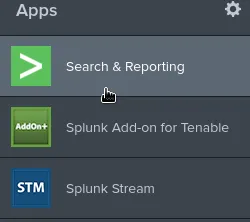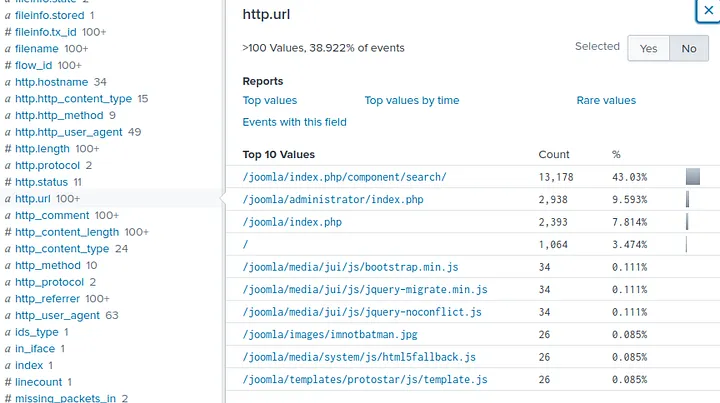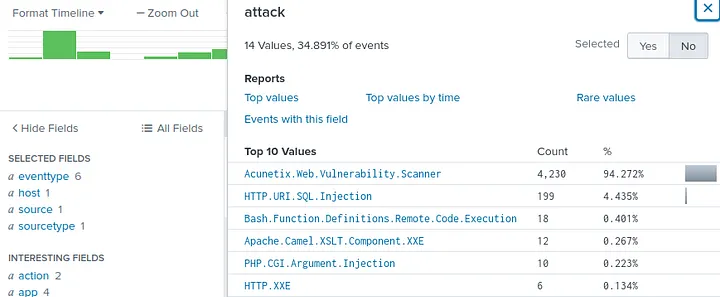📝 Case Study: Incident Handling with Splunk
🔹 Overview
In this case study, I revisited the Introductory Splunk SOC Room on TryHackMe. The exercise focused on analyzing server logs to investigate attacks on imreallynotbatman.com.
Skills demonstrated:
- Log analysis in Splunk Search & Reporting
- Creating filters and queries
- Investigating attacker behavior
- Mapping attack phases (Reconnaissance → Delivery)
- Identifying malware, IPs, and CVEs
🔍 Key Activities & Highlights
1. Reconnaissance Phase
- Analyzed Suricata alerts for signs of exploitation attempts
- Identified a reference to CVE-2014-6271 (Shellshock vulnerability)
- Determined the web server CMS being targeted was Joomla
- Detected the use of the Acunetix vulnerability scanner by the attacker



Other findings:
- Server IP: 192.168.250.70
2. Exploitation Phase
- Observed multiple brute force attempts against the Joomla admin panel
- Targeted username: admin
- Correct password identified: batman
- Logged 412 unique password attempts
- Attacker source IP responsible for brute force: 23.22.63.114

3. Installation Phase
- Found suspicious executable: 3791.exe
- Extracted its MD5 hash from logs:
AAE3F5A29935E6ABCC2C2754D12A9AF0 - Mapped execution to the user NT AUTHORITY\IUSR
- VirusTotal search revealed alias: ab.exe


4. Action on Objectives
- Website defaced with file: poisonivy-is-coming-for-you-batman.jpeg
- Fortigate Firewall triggered detection: HTTP.URI.SQL.Injection from attacker IP 40.80.148.42
- Dynamic DNS domain linked to attack: prankglassinebracket.jumpingcrab.com

5. Command & Control Phase
- Identified attacker group: P01s0n1vy
- IP associated with pre-staged domains: 23.22.63.114
- Email linked to attacker infrastructure: lillian.rose@po1s0n1vy.com
- Malware hash tied to Poison Ivy APT:
c99131e0169171935c5ac32615ed6261 - Malware sample name: MirandaTateScreensaver.scr.exe
6. Weaponization Phase
- APT-related IP: 23.22.63.114
- Likely attacker email: lillian.rose@po1s0n1vy.com
7. Delivery Phase
- Malware hash: c99131e0169171935c5ac32615ed6261
- Malware name:
MirandaTateScreensaver.scr.exe

8. Conclusion
Through this hands-on case study, I practiced:
- Identifying exploits and CVEs in logs
- Tracing brute force login attempts
- Detecting malware installation and execution
- Mapping attacker infrastructure to IP, domains, and email IOCs
- Following the Incident Handling lifecycle from detection to remediation
This exercise reinforced my ability to work with Splunk and Suricata alerts to investigate real-world security incidents.
🔗 Navigation
- Back to SIEM Home